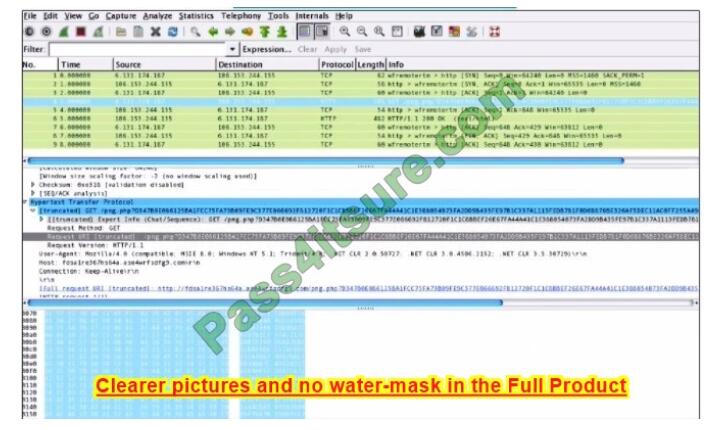Exam A QUESTION 1
Which two commands are required to enable multicast on a router, knowing that the receivers only supports IGMPv2? (Choose Two)
A. IP PIM RP-address
B. IP PIM ssm
C. IP PIM Sparse-mode
D. IP PIM Passive
Correct Answer: AC QUESTION 2
A branch router is configured with an egress QoS policy that was designed for a total number of 10 concurrent VOIP Calls.
Due to Expansion, 15 VOIP Calls are now running over the link, but after the 14th call was established, all calls were affected and the voice quality was dramatically degraded.
Assuming that there is enough bandwidth on the link for all of this traffic, which part of the QOS configuration should be updated due to the new traffic profile?
A. Increase the shaping rate for the priority queue.
B. Remove the policer applied on the priority queue.
C. Remove the shaper applied on the preiority queue.
D. Increase the policing rate for the priority queue.
Correct Answer: D QUESTION 3
A new Backup Connection is being deployed on a remote site router. the stability of the connection has been a concern. in order to provide more information to EIGRP Regarding this interface, You wish to incorporate the “Reliability” cost metric in the EIGRP Calculation with the command metric weights 1 0 1 0
1.
What impact will this modification on the remote site router have for other existing EIGRP neighborships from the same EIGRP Domain?
A. Existing Neighbors will immediately begin using the new metric.
B. Existing Neighbors will use the new metric after clearing the EIGRP Neighbors.
C. Existing Neighbors will resync, maintaining the neighbor relationship
D. All ecisting neighbor relationships will go down
Correct Answer: D QUESTION 4
Refer to the exhibit. ***Exhibit is Missing***
R1 has an EBGP session to ISP 1 and an EBGP session to ISP 2. R1 Receives the same Prefixes through both links.
Which Configuration Should be applied so that the link between R1 and ISP 2 will be preferred for outgoing traffic (R1 to ISP 2)?
A. Increase local preference on R1 for Received Routes
B. Decrease local preference on R! for Received Routes
C. Increase MED on ISP 2 for Received Routes
D. Decrease MED on ISP 2 for Received Routes
Correct Answer: A QUESTION 5
Refer to the exhibit.
***Exhibit is Missing***
A small enterprise connects its office to two ISPs, Using Separate T1 links. A Static Route is used for the
default Route, Pointing to both interfaces with a different Administrative distance, So that one of the default router is preferred.
Recently the primary link has been upgraded to a new 10 MB/S ethernet link After a Few Weeks, they experinced a failure. the link didn’t pass traffic, but the primary static route remained active. they lost their internet connectivity, even though the backup link was operating.
Which two possible solutions can be implemented to avoid this situation in the future? (Choose two)
A. Implement HSRP link tracking on the branch router R1
B. Use a track object with an IP SLA probe for the static route on R1.
C. Track the link state of the ethernet link using a track object on R1
D. Use a routing protocol between R1 and the upstream ISP
Correct Answer: BD QUESTION 6
Why would a rogue host that is running a DHCP Server on a Campus LAN network present a security risk?
A. It may allocate IP addresses from an unknown subnet to the users
B. all Multicast traffic can be sniffer y using the DHCO Multicasr capabilities
C. the CPU utilization of the first hop router can be overloaded by exploiting DHCP Relay open ports
D. A potential Man-in-the-middle Attack can be used against the clients.
Correct Answer: D QUESTION 7
Which Statement is true about TCN Propagation?
A. The originator of the TCN immediately floods this information through the network
B. the TCN propagation is a two step process
C. A TCN is generated and sent to the root bridge
D. the root bridge must flood this information throught the network
Correct Answer: A QUESTION 8
Which statement is true about loop guard?
A. Loop Guard only operates on interfaces that are considered point-to-point by the spanning tree.
B. Loop Guard only operates on root ports.
C. Loop Guard only operates on designated ports
D. Loop Guard only operates on edge ports Correct Answer: A
QUESTION 9
Which two are effects of connecting a network segment that is running 802.1D to a network segment that is running 802.1w? (Choose Two.)
A. the entire network switches to 802.1D and generates BPDUs to determine root bridfe status.
B. A migration delay of three seconds occurs when the port that is connected to the 802.1D bridge comes up
C. The entire network reconverges and a unique root briddge for the 802.1D segment, and a root bridge for the 802.1W segment, is chosen
D. the first hop 802.1w switch that is connected to the 802.1D runs entirely in 802.1D compatibility mode and converts the BPDUs to either 802.1D or 802.1W segments of the network
E. Classic 802.1D timers, Such as forward Delay and Max-age, will only be used as a backup, and will not be necessary if point-to-point links and edge prots are properly identified and set by the administrator.
Correct Answer: BD
QUESTION 10
Which command is used to enable Etherchannel hashing for layer 3 IP and Layer 4 Port-based CEF?
A. mpls ip cef
B. port-channel ip cef
C. mpls ip port-channel cef
D. port-channel load balance
E. mpls ip load-balance
F. ip cef etherchannel channel-id XOR L4
G. ip cef connection exchange
Correct Answer: D
QUESTION 11
When you are troubleshooting duplex mismatches, which two errors are typically seen on the fullduplex end? (Choose two.)
A. runts
B. FCS errors
C. interface resets
D. late collisions
Correct Answer: AC

